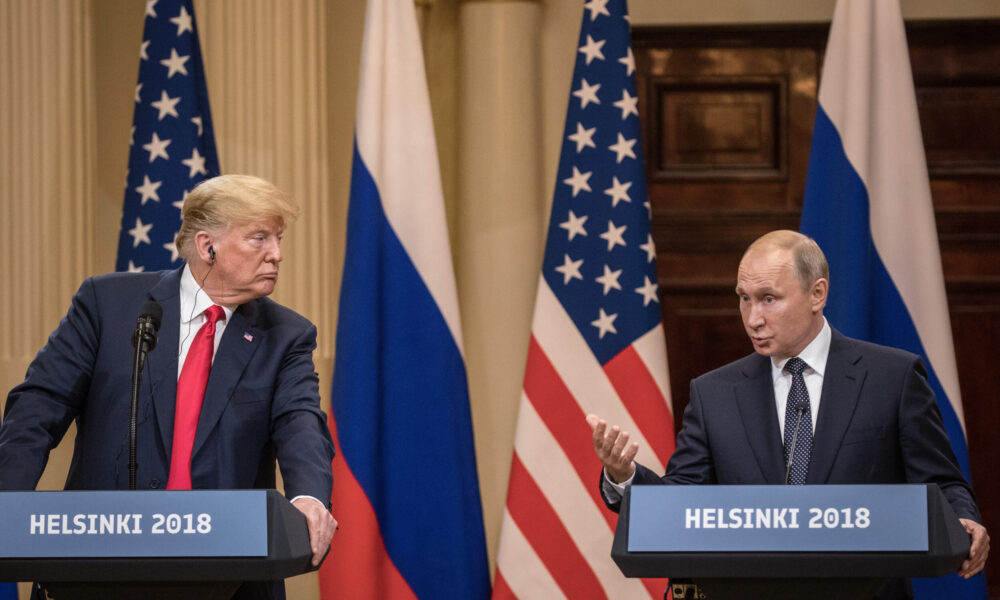The New Strategic Arms Reduction Treaty (New START), the last remaining bilateral arms control treaty between the United States and Russia, will expire one year from today, on February 5, 2026. New START legally limits the number of long-range nuclear weapons both countries can deploy. Moreover, it seems unlikely that a follow-on agreement will be negotiated and finalized in the year remaining.
Why does New START matter?
New START has served as a bulwark against an unconstrained arms race. When the treaty was in good standing, it limited the deployment of long-range warheads to 1,550 for each country. It provided for on-site verification, allowing US inspectors rapid access to nuclear sites in Russia and vice versa, backed up by mandatory notification of any movements of covered weapons and changes in status.
US support for Ukraine caused President Vladimir Putin to suspend Russia’s participation in New START back in February 2023, though he pledged to continue abiding by the treaty’s limits. The United States responded by ending Russia’s ability to monitor US nuclear sites, revoking inspectors’ visas, and denying clearance for Russian aircraft in US airspace.
In January, the US State Department declared it could not certify that Russia was complying with New START, though it reported that if Russia had gone above the treaty’s limits, it was only by a small amount. It stated “with high confidence that Russia did not engage in any large-scale activity above the Treaty limits in 2024.”
Unfortunately, with the looming expiration of New START, we could see an era of arsenal expansion in which both the United States and Russia are free to increase their number of deployed nuclear weapons. Both countries have the capacity to do this rather quickly, simply by deploying additional warheads on existing land-based or submarine-based missiles.
Pressure from nuclear hawks on the United States to exceed its New START limits has been growing. For example, in 2023, a congressionally appointed commission suggested that the United States will need to increase its deployed strategic nuclear forces and recommended building new types of nuclear weapons and delivery vehicles. When asked by Congress to respond to the commission’s report, the head of US Strategic Command discussed putting additional warheads on existing ICBMs or the new Sentinel missile (which is intended to replace existing ICBMs). In the current political environment, voices advocating for expansion may very well carry the day.
What happens next?
Fortunately, there is still reason to hope that the United States and Russia can avoid a potentially disastrous nuclear arms race. President Trump recently remarked that he’d like to see “denuclearization” and expressed a willingness to restart conversations with Russia and China. Putin signaled openness to such talks just as Trump took office.
The inclusion of China could significantly change the dynamics. The predicted growth of China’s nuclear arsenal to 1,000 warheads by 2030 (a level well below the US arsenal of 3,700) is a key motivating factor for those pushing the United States to expand its nuclear arsenal. Past efforts to draw China into trilateral negotiations have failed, and are likely to continue to fail as long as the United States maintains a nuclear arsenal more than three times the size of China’s. China is willing to negotiate through the United Nations Conference on Disarmament (UNCD), which would require the United States to reengage with, and thereby revitalize, the UNCD.
Nuclear risks are rising on multiple fronts
The uncertainty about what happens after New START expires is emblematic of a turn away from disarmament and arms control toward greater reliance on nuclear weapons. New START’s imminent demise is one of many worrisome developments. We are also seeing a push in the United States to begin building new nuclear bomb cores, also known as plutonium pits, to arm new nuclear weapons at numbers that are unnecessary and with a rush to production at a pace that is unsafe.
Unbelievably, there are even some suggesting that the United States resume explosive nuclear testing. The United States has conducted more than 1,000 explosive nuclear tests in its history—more than any other country—and has since developed sophisticated tools that can ensure that the stockpile is safe and reliable without explosive testing. If the United States were to resume explosive testing, it would shatter the global taboo against it and encourage other countries that have much less experimental data to follow suit. The United States therefore has the most to lose from a return to explosive nuclear testing.
All this creates a world where nuclear risks are rising. And this is happening in the midst of so many other threats—to progress on combating climate change, pursuing environmental justice, and fighting inequity in all its manifestations.
When it comes to nuclear weapons, we’ve been in this dangerous place before. But back then, concerned people used their voices, advocated for change, and won victories for arms control and disarmament. What is happening now is a concerted backlash against that very progress, and we can reverse the tide once again by coming together in a concerted and focused effort. Now is precisely the time to keep sight of a more secure, healthy future for people and the planet. We must keep pushing for it.

